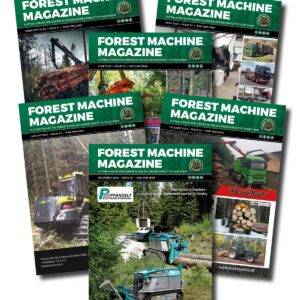FLS (Forestry and Land Scotland’s) team in Aberdeenshire and Tayside has completed a massive effort to gather the detailed data that will inform the complex planning of full-scale timber recovery work in its storm damaged forests.
With drones proving to be of limited use, aircraft were deployed to over-fly the most badly affected forests in Aberdeenshire and Tayside – a dispersed area of 29,000 ha , which if all in one place would be four and a half times the size of Dundee.
The information gathered by the flights indicate that within the 29,000ha surveyed, 2,600 ha of forest has been felled by the storms. The hundreds of thousands of trees that need to be cleared amount to around 1,000,000 cubic metres of timber, the equivalent of two years of planned felling operations.
Countesswells Forest is one of the most severely damaged, with around 43% of the trees either blown over or still standing but unsafe.
Nick Gough, FLS’ Planning Projects Manager, said; “The scale of the damage to our forests has been generally understood for some time but the challenging logistical task of clearing up the damage required gathering a significant quantity and degree of detailed data.
“Ground based surveys and initial drone flights, that provided standard panoramic pictures, helped us identify areas where we needed more detail. But with drones limited in their capability by things such as wind speed, battery life and the need to maintaining line of sight, it made sense that we opt for aircraft imaging.
“Thanks to a spell of good weather we were fortunate to complete our entire survey programme in a little over a week.
“This then gave us the data we needed to build up digital photo-mosaics that gave us the high quality information that we have now put directly in to our mapping software.”
FLS worked with Caledonian Air Surveys, one of only two companies in Scotland capable of delivering what was required.
The aerial images have now been processed by FLS’ specialists who have mapped the areas of windblow and analysed the data to identify work areas, likely timber volumes and the logistics of recovering, storing and uplifting the storm-felled timber.
-
That’s a remarkable amount of work hours for a single machine, the Norcar 600 owned by Erkki Rinne is taken well care of, it even has the original Diesel engine.
-
Kieran Anders is a forestry contractor working in the lake district. His work involves hand cutting and extracting timber using a skidder and tractor-trailer forwarder.
-
It is not possible to eliminate chain shot, but there are simple steps that can be taken to reduce the risk.
-
Arwel takes great pride in the fact that the mill has no waste whatsoever, “the peelings are used for children’s playgrounds, gardens and for farm animals in barns in the winter and the sawdust has multiple uses in gardens and farms as well.
-
Timber hauliers need to encourage young blood in, and also look after the hauliers we have, we need make the sector a safe and positive place to work.
FIND US ON
Related Posts
The data will also help the team to prioritise timber recovery work according to the species of tree and the different rates at which the fallen timber will begin to degrade.
Clear up work at some less severely damaged forests has been underway for some time but dealing with more complex and extensive damage could take up to two years to fully complete.
Forest Machine Magazine is written and edited by a forest professional with over 40 years hands on experience. We are dedicated to keeping you informed with all the latest news, views and reviews from our industry.
To support us you can subscribe to our bi-monthly magazine which is delivered to your door from only £30 per year.
Subscribe here
#homeoflogging #writtenbyloggersforloggers #loggingallovertheworld
-

 1 Year Subscription£0.00
1 Year Subscription£0.00 -

 2 Year Subscription£0.00
2 Year Subscription£0.00 -

 Issue 35£6.00
Issue 35£6.00 -

 Sustainable Logging: Powering The Planet T-Shirt£17.50 – £20.00
Sustainable Logging: Powering The Planet T-Shirt£17.50 – £20.00 -

 Sustainable Logging: Powering The Planet Hoodie£33.00 – £36.00
Sustainable Logging: Powering The Planet Hoodie£33.00 – £36.00

